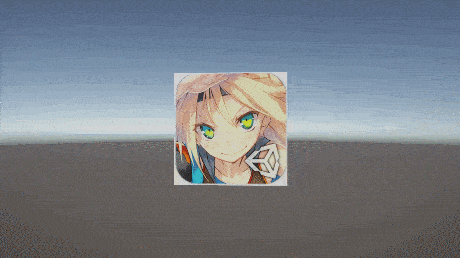1
2
3
4
5
6
7
8
9
10
11
12
13
14
15
16
17
18
19
20
21
22
23
24
25
26
27
28
| float4x4 GetObjectToWorldMatrix(float3 pos)
{
float4x4 objectMatrix = float4x4(
_Size, 0, 0, pos.x,
0, _Size, 0, pos.y,
0, 0, _Size, pos.z,
0, 0, 0, 1);
return mul(_LocalToWorldMatrix, objectMatrix);
}
v2f vert (appdata v, uint instanceID : SV_InstanceID)
{
v2f o;
Particle particle = _ParticleBuffer[instanceID];
float4x4 objectToWorldMatrix = GetObjectToWorldMatrix(particle.position);
float4 positionWS = mul(objectToWorldMatrix, v.vertex);
o.pos = TransformWorldToHClip(positionWS);
o.uv = _ParticleBuffer[instanceID].uv;
return o;
}
half4 frag (v2f i) : SV_Target
{
half4 color = tex2D(_OriginTex, i.uv);
half4 targetColor = tex2D(_TargetTex, i.uv);
color = lerp(color, targetColor, _Lerp);
return color;
}
|
